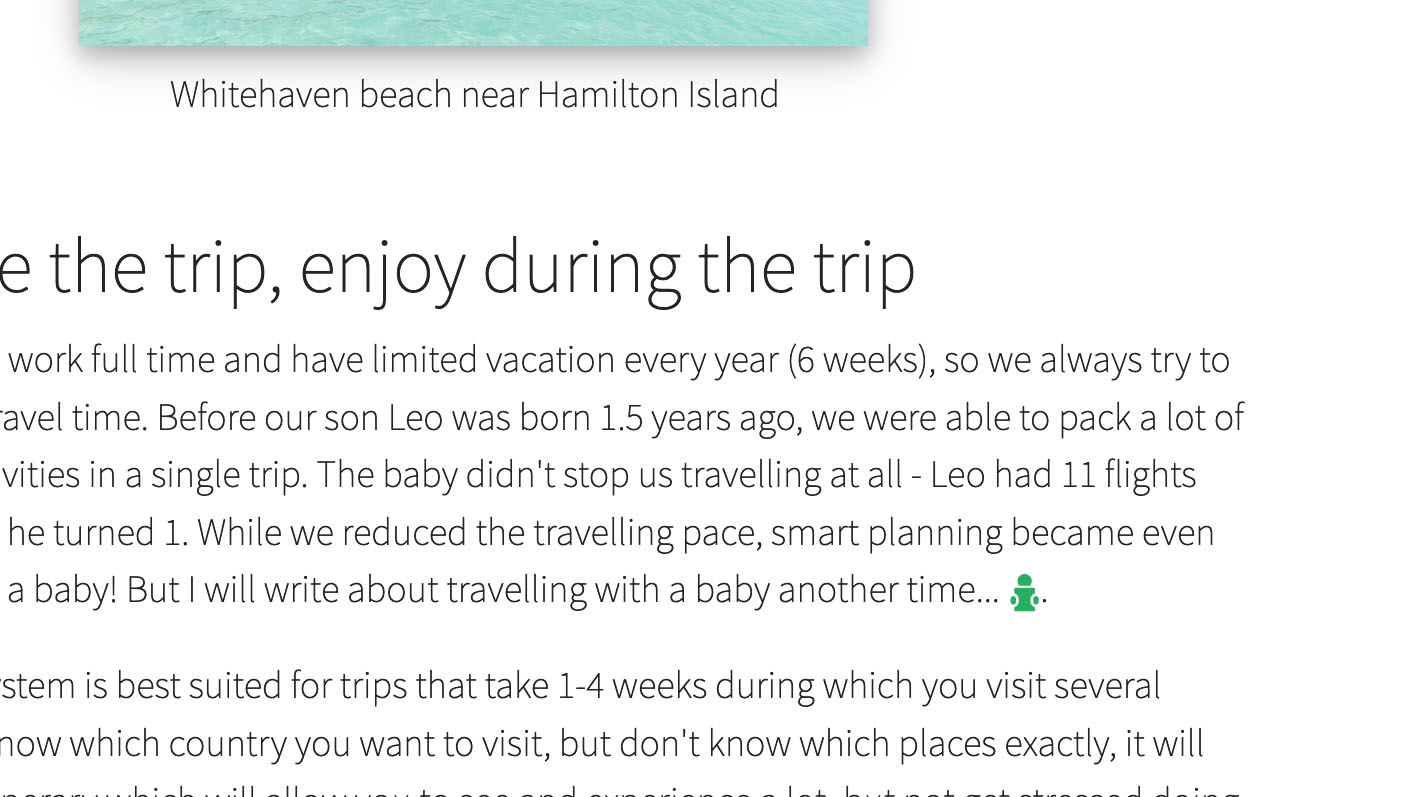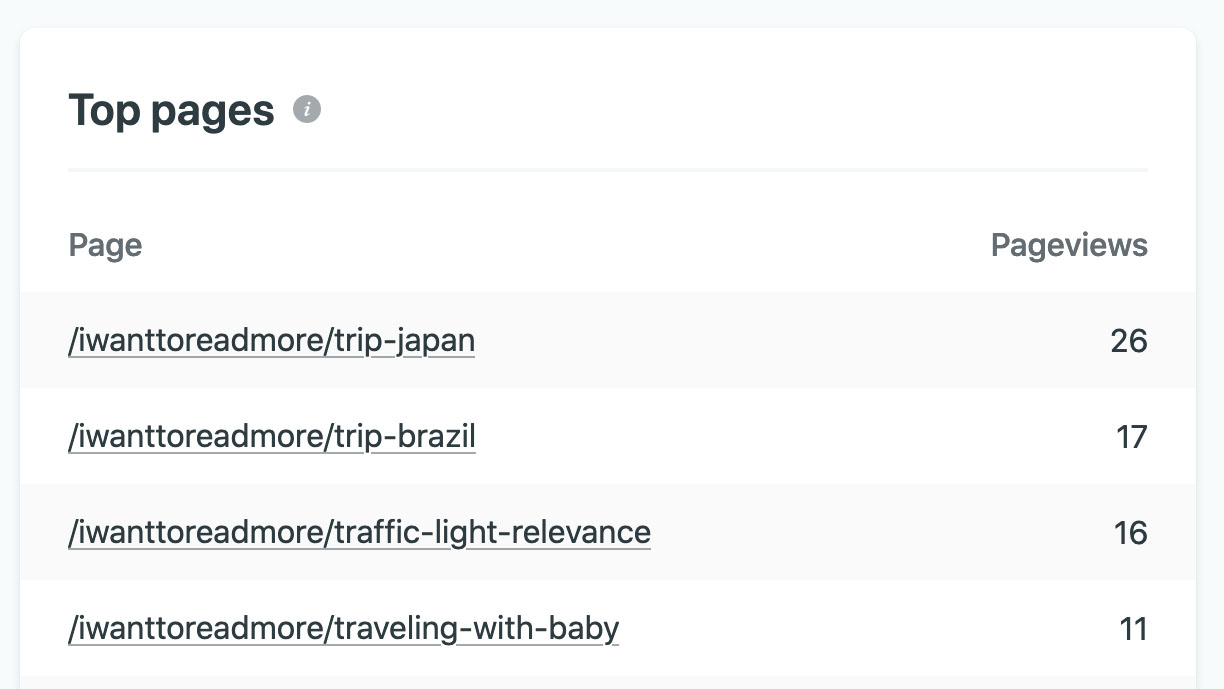Building in the open: open source, open metrics, open development.
05 Jul 2020 by Vladimir Haltakov
The Idea
I had this idea, when I started my personal blog couple of months ago. I was writing on different topics like self-driving cars, technology and travel. Sometimes, I touched on topics about which I could write a whole new article. I had so many ideas, but how to decide, what to write about next? Wouldn't it be nice if I could just ask my readers?
I started adding small icons like this at suitable places in the text. The idea was that if a reader was interested about this topic, he could just click the icon to vote for it. No registration required, no filling of feedback forms - just a single click! This worked well and people reading my blog started clicking the vote links. There were some real surprises, about which topics people found interesting.
For example, I wrote an article about travel planning. My plan was to write a follow-up article about organizing the time during the trip. However, most people voted that they want to read about traveling with a baby instead and this is what I ended up writing about next.
The Prototype
I didn't want to spend too much time coding a tool, before I knew that it will be useful. So, I found a nice way to set the whole thing up with a minimal effort, even if it was a hack...
I use a static site generator for my blog (Pelican) and host it on Netlify. This means that I didn't have a server where I could run code and a database to store the results. I also didn't want to set the whole thing up before I knew it is worth it. However, I made use of two features that Netlify offers - custom redirect rules and server side analytics.
When somebody clicks a vote link, a simple JavaScript code would just make a GET request to a URL like that https://haltakov.net/iwanttoreadmore/some-topic. I created a rule that would redirect such requests it to an empty page . The result is not shown to the user - he will only see is a small toast that the vote is counted.
In the server side analytics, though, the original URL is counted every time somebody clicked on the vote link. I could then just look at the open counts for the iwanttoreadmore URLs and see which topics are more popular. In practice, getting the information was a bit cumbersome, because Netlify's analytics page only allows you to see the 15 URLs with the most visits. However, it fetches the data from a REST API, so I was able to call it with different parameters and get all the data (thanks Jim Nielsen). In the end, I had statistics about which topics my readers found most interesting, which I used to decide which topics I should write about on my blog.
The Product
I thought that if this tool is so useful to me, it may be useful to other bloggers as well. So, I started building as a real web service on iwanttoreadmore.com. I decided to build this project in the open and I have set myself the following goals for it:
- Open source. I will open source all the code on GitHub.
- Open metrics. I will make all the metrics and statistics public, starting with the web analytics.
- Open development. I will write about how I make all important decisions during the development in this blog.
- Simple. I will keep it as simple and as easy to use as possible.
- Privacy oriented. I will only collect the data needed to count the votes and nothing else (not even IP addresses) and will not be sold.
- Paid service. It will be a paid service so my incentives will be aligned with those of my customers - providing the best product for them and not for advertisers.
The Experiment
I benefited a lot from the indie hackers community and I want to give back. While building this project I'm learning many new things, so will write a tutorial for every major feature I implement (you can start with the first one for creating a static site with Pelican). There I will share why I chose specific design or technology and the steps to build it. The tutorials will use the exact same code I use to run the product. And of course, I will use I Want To Read More to get feedback on what topics to write about 😃.
Don't miss the next update
Subscribe to our newsletter below if you don't want to miss our next update. We are constantly working on some new tutorials about building a SaaS product.

